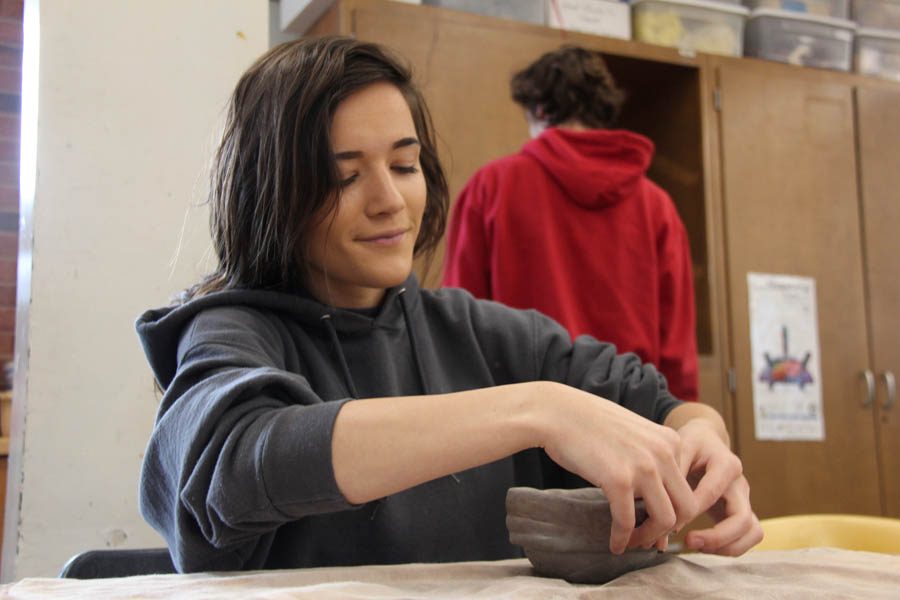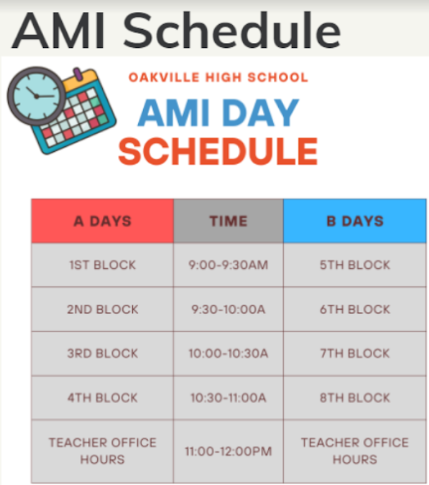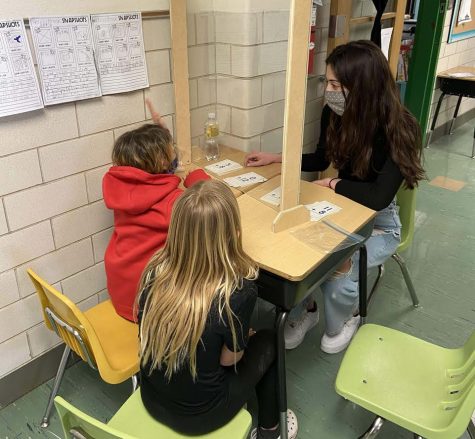C days cause conflicts
Sophie Steinke (12) works on her coil pitcher project in ceramics I on Oct. 25. Ceramics is one of many classes that does not have enough time to work on C days.
For years, OHS has had a block schedule with students attending four of their classes on A-days and their other classes, one of these being ANP (Academic Network Period), on B-days. For the 2017-18 school year, however, a C-day has been implemented. These fall on Mondays of every full school week, and they consist of students going to all of their classes, minus ANP, for 50 minutes rather than 90 minutes on A and B-days. For the most part, teachers and students dislike this new schedule. In a recent survey, over 600 students responded and 85 percent were negative. Students and faculty alike despise C-days because they cause unnecessary stress.
C-days were created so that the school could use this year to figure out which classes function best in a short time period and which classes do not. This is to allow for a “flex schedule,” which will likely be established in the 2018-19 school year. Using this year as an experiment year and creating a C-day may look good on paper, but it has been incredibly aggravating for several reasons.
It is true that some classes are more successful when students meet with their teachers more frequently for shorter periods of time. For example, students generally perform better in math classes when they see their math teacher every day. Many classes, though, like FACS, cannot work in a short time period. For example, sewing students hardly have enough time to get their projects started before the bell rings and they’re forced to move on. Art classes, such as ceramics, also do not have enough time to get things done. The students in ceramics have to do book rather than working on their projects. In several classes, students need a full 90 minutes to experience the true benefit of project-based learning.
Along with not having enough time for their classes, students also feel that they do not have enough time for homework. Assignments for all seven of their classes are due on mondays, which is very frustrating for students. Athletes often have games on fridays and/or saturdays. Sundays are dedicated to church and family time for many individuals. Plus, most upperclassmen have jobs. This leaves little time for homework on the weekends. Students are forced to sacrifice their sleep—their time with their families—their social lives—in order to keep up their grades.
Numerous teachers do not know what to do with C-days. They are not used to having shorter time periods for their classes and are having trouble planning their teaching schedules accordingly. Many have decided to dedicate C-days to quiz days. By doing this, some students may have up to seven quizzes in a single day. This is incredibly overwhelming. There is no way the school can expect students to go to work, participate in extracurricular activities, have all of their assignments completed on monday, and study for multiple quizzes.
Rather than trying to cram in shortened lesson plans or assign quizzes, teachers could try using C-days as classroom bonding time. This could be a great time to use kagan activities and allow students to build relationships in the classroom. C-days may also be more beneficial if teachers use them as a review day or as a way to preview what the rest of the week will entail.
Some classes could function well in a shorter time period, but to force every teacher to take every one of their classes and squeeze them into 50 minute periods does not make sense. The problems and confusion C-days cause far outweigh any benefits they bring.

Hello! I’m Nicole and I’m the editor-in-chief this year, along with Mckenzie. I was on the yearbook staff my sophomore year and I was the copy editor...

Hi, I’m Mckenzie Knapp and at senior at OHS and I’m this year's newspaper editor in chief, journalism social media director, assistant yearbook editor,...






















